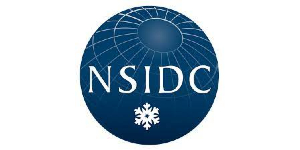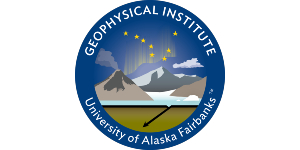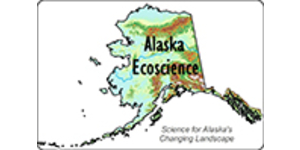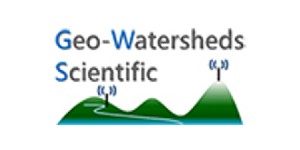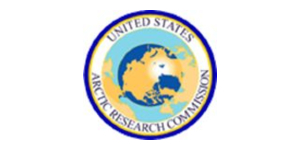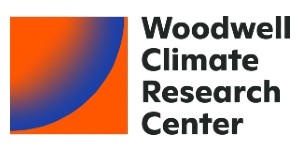|
2020051083 Hrbacek, Filip (Masaryk University, Faculty of Science, Department of Geography, Brno, Czech Republic); Cannone, Nicoletta; Knazkova, Michaela; Malfasi, Francesco; Convey, Peter and Guglielmin, Mauro. Effect of climate and moss vegetation on ground surface temperature and the active layer among different biogeographical regions in Antarctica: Catena (Giessen), 190, Paper no. 104562, illus. incl. 7 tables, sketch map, 60 ref., July 2020.
Ground surface temperature (GST) and active layer thickness (ALT) are key indicators of climate change (CC) in permafrost regions, with their relationships with climate and vegetation being crucial for the understanding of future climate change scenarios, as well as of CC feedbacks on the carbon cycle and water balance. Antarctic ice free-areas host simplified ecosystems with vegetation dominated by mosses and lichens, and an almost negligible anthropogenic impact, providing a good template of ecosystem responses to CC. At three different Antarctic Conservation Biogeographical Regions (ACBR) sites in Antarctica located between 74° and 60°S, we compared barren ground and moss vegetated sites to understand and quantify the effects of climate (air temperature and incoming radiation) and of vegetation on GST and ALT. Our data show that incoming radiation is the most important driver of summer GST at the southernmost site, while in the other sites air temperature is the main driver of GST. Our data indicate that there is a decoupling between ALT and summer GST, because the highest GST values correspond with the thinnest ALT. Moreover, our data confirm the importance of the buffering effect of moss vegetation on GST in Antarctica. The intensity of the effect of moss cover on GST and ALT mainly depends on the species-specific moss water retention capacity and on their structure. These results highlight that the correct assessment of the moss type and of its water retention can be of great importance in the accurate modelling of ALT variation and its feedback on CC.
DOI: 10.1016/j.catena.2020.104562
2020053205 Arndt, Kyle A. (San Diego State University, Department of Biology, San Diego, CA); Lipson, David A.; Hashemi, Josh; Oechel, Walter C. and Zona, Donatella. Snow melt stimulates ecosystem respiration in Arctic ecosystems: Global Change Biology, Pre-issue publication, 10 p., illus. incl. sketch map, 73 ref., June 30, 2020. (Published online on June 30, 2020).
Cold seasons in Arctic ecosystems are increasingly important to the annual carbon balance of these vulnerable ecosystems. Arctic winters are largely harsh and inaccessible leading historic data gaps during that time. Until recently, cold seasons have been assumed to have negligible impacts on the annual carbon balance but as data coverage increases and the Arctic warms, the cold season has been shown to account for over half of annual methane (CH4) emissions and can offset summer photosynthetic carbon dioxide (CO2) uptake. Freeze-thaw cycle dynamics play a critical role in controlling cold season CO2 and CH4 loss, but the relationship has not been extensively studied. Here, we analyze freeze-thaw processes through in situ CO2 and CH4 fluxes in conjunction with soil cores for physical structure and pore water samples for redox biogeochemistry. We find a movement of water toward freezing fronts in soil cores, leaving air spaces in soils, which allows for rapid infiltration of oxygen-rich snow melt in spring as shown by oxidized iron in pore water. The snow melt period coincides with rising ecosystem respiration and can offset up to 41% of the summer CO2 uptake. Our study highlights this important seasonal process and shows spring greenhouse gas emissions are largely due to production from respiration instead of only bursts of stored gases. Further warming is projected to result in increases of snowpack and deeper thaws, which could increase this ecosystem respiration dominate snow melt period causing larger greenhouse gas losses during spring.
DOI: 10.1111/gcb.15193
2020050979 Hu Guojie (Chinese Academy of Sciences, Northwest Institute of Eco-Environment and Resources, State Key Laboratory of Cryospheric Sciences, Cryosphere Research Station on Qinghai-Xizang Plateau, Lanzhou, China); Zhao Lin; Li Ren; Wu Xiaodong; Wu Tonghua; Pang Qiangqiang; Liu Guangyue and Xie Changwei. A model for obtaining ground temperature from air temperature in permafrost regions on the Qinghai-Tibetan Plateau: Catena (Giessen), 189, Paper no. 104470, illus. incl. 7 tables, geol. sketch map, 78 ref., June 2020.
Air and ground temperatures are important factors contributing to land and atmosphere processes as well as ecosystem dynamics. This paper presents a simple model for simulating ground temperature from air temperature in the permafrost regions on the Qinghai-Tibetan Plateau (QTP). The model takes hysteresis between daily air temperature and ground temperature into consideration as well as exponential and linear functions for annual average ground temperatures at different depths. Results indicate an evident hysteresis in ground temperature with increasing depth. By taking hysteresis into account, the developed model provides improved daily ground temperature estimates compared to those obtain from the original linear regression, at Xidatan (site QT09) and Kunlun Pass (site CN06) in the permafrost regions on the QTP, with an average root mean square error (RMSE), normalized standard error (NSEE), and mean absolute error (MAE) of 1.12 °C, 0.41, and 0.84 °C for QT09, and 1.41 °C, 0.29 and 1.10 °C for CN06, respectively, at all depths. The results indicate that the model that takes hysteresis into account provides monthly ground temperatures that are closest to field observations, with an average RMSE, NSEE, and MAE of 0.63 °C, 0.24, and 0.50 °C, respectively, at QT09 site and 0.92 °C, 0.18 and 0.63 °C, respectively, at CN06 site. In addition, the simulation accuracy of the average annual ground temperature is significantly improved by using the combined exponential and linear model, and this is particularly relevant when drilling boreholes at great depths in permafrost regions. Therefore, these models provide a useful and simple method for simulating ground temperature and modeling permafrost changes under global warming conditions.
DOI: 10.1016/j.catena.2020.104470
2020050971 Jiang Guanli (Chinese Academy of Sciences, Northwest Institute of Eco-Environment and Resources, State Key Laboratory of Frozen Soil Engineering, Lanzhou, China); Wang Luyang; Yun Hanbo; Gao Siru and Wu Qingbai. Thermal influences of road engineering on permafrost underneath different surface condition in the Qinghai-Tibet Plateau: Cold Regions Science and Technology, 173, Paper no. 103028, May 2020. Indexed from publisher-supplied data.
Road engineering produces thermal influences on the permafrost on both sides of the road, but this impact is unclear yet. In this study, the thermal influences of the highway on the permafrost underneath different surfaces conditions were investigated by means of permafrost monitoring in two sites along the Qinghai-Tibet Highway (QTH). The results show that on both sides of the QTH there is a significant thermal influence on the permafrost, but this influence is closely related to the different vegetation conditions. The thermal influence range of the highway on the permafrost underneath high vegetation coverage is much smaller than that underneath low vegetation coverage. Additionally, the characteristics of the heat exchange between the atmosphere and the ground also had a significant difference between the two monitoring sites, which could cause the differing thermal states of the permafrost.
DOI: 10.1016/j.coldregions.2020.103028
2020051049 Mavromatis, Vasileios (Géosciences Environnement Toulouse, Observatoire Midi-Pyrénées, Toulouse, France); Prokushkin, Anatoly S.; Korets, Mikhail A.; Chmeleff, Jérôme; Mounic, Stéphanie and Pokrovsky, Oleg S. Weak impact of landscape parameters and rock lithology on Mg isotope composition of the Yenisey River and its tributaries: Chemical Geology, 540, Article 119547, illus. incl. 2 tables, geol. sketch map, 65 ref., May 5, 2020.
Constraining the mechanisms controlling the riverine flux of major cations and their isotopes including that of Mg to the World Ocean is one of the challenges in Earth surface isotope geochemistry. In an attempt to identify the main factors affecting the Mg isotopic composition of large rivers including vegetation, climate and lithology of the watershed, we studied the largest, in terms of discharge, Siberian river, Yenisey, and 20 of its main tributaries, during spring flood, summer flow and winter. The working hypothesis was that the influence of bedrock composition is most pronounced in winter, when the soils are frozen and the rivers are fed by deep underground waters. Thus, we anticipated that the presence of permafrost will help to distinguish the impact of surface processes, linked to biological uptake and release, and deep soil/underground transport of Mg from mineral sources. In contrast to these expectations, no sizable differences in the Mg isotope composition of the river water (±0.1 ppm) for both the Yenisey tributaries and its main channel has been observed between the spring flood (May) and the winter (March) period. Those two periods are characterized by the differences of discharge and degree of lithological impact on element source in the river water. Regardless of the season, there was no straightforward control of lithology (relative abundance of carbonates, basalts, granites and sedimentary rocks) on d26Mg in the main tributaries of the Yenisey river. Our findings suggest that the use of riverine Mg isotope signature for tracing weathering mechanisms and dominant lithological impact is not straightforward at the scale of large rivers whose watersheds present multiple lithologies, variable climatic conditions and vegetation types.
DOI: 10.1016/j.chemgeo.2020.119547
2020051179 Mu Cuicui (Lanzhou University, College of Earth and Environmental Sciences, Lanzhou, China); Shang Jianguo; Zhang Tingjun; Fan Chengyan; Wang Shufa; Peng Xiaoqing; Zhong Wen; Zhang Feng; Mu Mei and Jia Lin. Acceleration of thaw slump during 1997-2017 in the Qilian Mountains of the northern Qinghai-Tibetan Plateau: Landslides, 17(5), p. 1051-1062, illus. incl. 1 table, geol. sketch maps, 51 ref., May 2020.
Climate warming increases thermokarst landscapes and thus leads to land degradation in the Circum-Arctic regions. Thermokarst landscapes were estimated to cover ~20% of the northern permafrost region, and their development is related to ground ice content and topographic conditions. However, changes in thaw slump distribution and development in mid- to low-latitude permafrost areas largely remain unknown. Here, we selected the Qilian Mountains of the northern Qinghai-Tibetan Plateau (QTP) as the study area. Combined with field investigation to measure the boundary of thaw slump using Real Time Kinematic (RTK), we analyzed historical changes in thaw slumps using 1969 and 1997 aerial photographs, 2009 and 2015 satellite imagery, and 2017 unmanned aerial vehicle (UAV) aerial images. The results showed that there are 15 thaw slumps covering an area of 0.03 km2, which were mainly distributed in terrain with a slope of 2-8° and elevation of 3552-3611 m. For the time periods of 1997-2009, 2009-2015, and 2015-2017, the average increase rates of thaw slump areas were approximately 61.8, 60.0, and 156.8 m2/y, and annual headwall retreat rates were approximately 1.3, 1.6 and 2.0 m/y. Based on the slopes, aspects, and altitudes from the Digital Elevation Model generated by UAV imagery, it suggested that geomorphic factors have no significant effect on the growth rates of thaw slump due to high heterogeneities of alpine environments. Our results showed that thaw slumps with polycyclic and active characteristics covered at least 0.9% of northern QTP permafrost regions and are expected to rapidly accelerate with climate warming.
DOI: 10.1007/s10346-020-01344-3
2020047149 Tai Bowen (Chinese Academy of Sciences, Northwest Institute of Eco-Environment and Resources, Laboratory of Frozen Soil Engineering, Lanzhou, China); Liu Jiankun and Chang Dan. Experimental and numerical investigation on the sunny-shady slopes effect of three cooling embankments along an expressway in warm permafrost region, China: Engineering Geology, 269, Article 105545, illus. incl. block diags., sects., strat. cols., 5 tables, geol. sketch map, 32 ref., May 2020.
Subgrade diseases caused by temperature differences of sunny-shady slope seriously threaten the safe operation of highways or railways in permafrost regions. This study analyzes the transverse thermal characteristics of different soil layers for three different cooling embankments based on temperature data collected from the newly constructed Gonghe-Yushu Expressway. The complex causes of differential temperature fields in warm permafrost regions are then investigated. Three-dimensional heat transfer models are established for each cooling embankment and used to predict the long-term transverse thermal characteristics of the embankments. On the basis of the study, optimized engineering measures are proposed to mitigate the transverse ground temperature difference between the slopes. Results demonstrate that the temperature differences between the sunny and shady sides for all three cooling embankments are greater than 0°C. The underlying permafrost displays a warming trend which can be understood to be increasing under the effect of climate warming. Ventilated embankment with insulation and crushed rock proved the most effective in decreasing transverse thermal differences. These findings provide important technical references for the future construction and operational safety of expressway in warm permafrost regions.
DOI: 10.1016/j.enggeo.2020.105545
2020050970 Zhang Zhenyu (Chinese Academy of Sciences, Northwest Institute of Eco-Environment and Resources, Lanzhou, China); Yu Qihao; You Yanhui; Guo Lei; Wang Xinbin; Liu Guojun and Wu Guilong. Cooling effect analysis of temperature-controlled ventilated embankment in Qinghai-Tibet testing expressway: Cold Regions Science and Technology, 173, Paper no. 103012, May 2020. Indexed from publisher-supplied data.
Temperature-controlled ventilated embankment (TCVE) is a feasible air-cooled embankment. It can control the heat transfer mode in ventilated duct of duct ventilated embankment according to the ambient air temperature with auto-temperature-controlled wind doors installed in the duct nozzle. For investigating the cooling performance and engineering effect of TCVE, a prototype testing section of the expressway was constructed on Qinghai-Tibet Plateau. The field observation data showed that the mean air temperature inside the duct in the warm season after installing the doors was about 3 °C lower than the temperature before installing the doors. The annual net heat release was 1.4 times than that before installing the doors near the permafrost table. One year after installing the doors, the 0 °C isotherm was raised by approximately 0.5 m and kept parallel to the embankment base; and a low-temperature zone of -2 °C appeared, and the zone below -1.5 °C was approximately 1.3 times than that before installing the doors. With the cooling effect of TCVE, the trend of embankment settlement was retarded, and the frost-heave capacity showed a tendency to decrease. This study verified the effectiveness of TCVE, which has a potential in cooling embankments in expressway construction in permafrost regions.
DOI: 10.1016/j.coldregions.2020.103012
2020052833 Friele, Pierre (Cordilleran Geoscience, Squamish, BC, Canada); Millard, Tom H.; Mitchell, Andrew; Allstadt, Kate E.; Menounos, Brian; Geertsema, Marten and Clague, John J. Observations on the May 2019 Joffre Peak landslides, British Columbia: Landslides, 17(4), p. 913-930, illus. incl. 1 table, geol. sketch maps, 50 ref., April 2020.
Two catastrophic landslides occurred in quick succession on 13 and 16 May 2019, from the north face of Joffre Peak, Cerise Creek, southern Coast Mountains, British Columbia. With headscarps at 2560 m and 2690 m elevation, both began as rock avalanches, rapidly transforming into debris flows along middle Cerise Creek, and finally into debris floods affecting the fan. Beyond the fan margin, a flood surge on Cayoosh Creek reached bankfull and attenuated rapidly downstream; only fine sediment reached Duffey Lake. The toe of the main debris flow deposit reached 4 km from the headscarp, with a travel angle of 0.28, while the debris flood phase reached the fan margin 5.9 km downstream, with a travel angle of 0.22. Photogrammetry indicates the source volume of each event is 2-3 Mm3, with combined volume of 5 Mm3. Lidar differencing, used to assess deposit volume, yielded a similar total result, although error in the depth estimate introduced large volume error masking the expected increase due to dilation and entrainment. The average velocity of the rock avalanche-debris flow phases, from seismic analysis, was ~25-30 m/s, and the velocity of the 16 May debris flood on the upper fan, from super-elevation and boulder sizes, was 5-10 m/s. The volume of debris deposited on the fan was ~104 m3, 2 orders of magnitude less than the avalanche/debris flow phases. Progressive glacier retreat and permafrost degradation were likely the conditioning factors; precursor rockfall activity was noted at least ~6 months previous; thus, the mountain was primed to fail. The 13 May landslide was apparently triggered by rapid snowmelt, with debuttressing triggering the 16 May event.
DOI: 10.1007/s10346-019-01332-2
2020053127 Kukkonen, Ilmo T. (University of Helsinki, Helsinki, Finland); Suhonen, Elli; Ezhova, Ekaterina; Lappalainen, Hanna; Gennadinik, Victor; Ponomareva, Olga; Gravis, Andrey; Miles, Victoria; Kulmala, Markku; Melnikov, Vladimir and Drozdov, Dmitry. Observations and modelling of ground temperature evolution in the discontinuous permafrost zone in Nadym, north-west Siberia: Permafrost and Periglacial Processes, 31(2), p. 264-280, illus. incl. 3 tables, sketch maps, 53 ref., April 2020.
We analyze ground temperatures measured daily at depths of 0-10 m in the Nadym region, north-west Siberia (65°18'N, 72°6'E). Nadym is located within the discontinuous permafrost zone and the forest-tundra transition subzone, thus representing an area threatened by permafrost thawing. Soil comprises a 0.4-1.0-m-thick topmost layer of peat with high porosity (»0.9), underlain by layers of mineral soil (sand, clay, loam) with lower porosities of 0.3-0.4. With a numerical heat transfer model, we provide predictions of general permafrost development for the next 300 years. Furthermore, we apply the model with the same time frame, to predict permafrost evolution in two monitoring boreholes (BH) in the Nadym area, BH 1-09 and 3-09 with present (2012-2016) temperatures at the top of the permafrost (TTOP) of -2.0 and 0.0 °C, respectively. Applying a mild warming trend (0.02 °C/yr in mean annual air temperature [MAAT], corresponding to the IPCC representative concentration pathway trend RCP 2.6) does not lead to thawing of permafrost during the applied 300 years of simulation time in BH 1-09, whereas in BH 3-09 thawing has already begun. Applying a strong warming trend of 0.05 °C/yr in MAAT (corresponding to RCP 8.5) leads to gradual thawing of permafrost in both boreholes. Abstract Copyright (2020), John Wiley & Sons, Ltd.
DOI: 10.1002/ppp.2040
2020053130 Liaudat, Dario Trombotto (IANIGLA, Geocryology, Mendoza, Argentina); Sileo, Noelia and Dapeña, Cristina. Periglacial water paths within a rock glacier-dominated catchment in the Stepanek area, Central Andes, Mendoza, Argentina: Permafrost and Periglacial Processes, 31(2), p. 311-323, illus. incl. strat. col., 2 tables, geol. sketch map, 64 ref., April 2020.
In the region of the Stepanek rock glacier (69°19'/69°26'W, 32°55'/32°59'S), in the Province of Mendoza, Argentina, seasonal hydrochemical monitoring was carried out between 2013 and 2017. This paper describes underground and surface water flow, and their hydrochemistry, and provides an overview of how groundwater interacts with the rock glacier. The cryogenic basin of the study area where the hydrological flows originate has a surface area of 11.5 km2. The Stepanek rock glacier fills the valley and its permafrost influences water flow. Isotopic analyses of surface ephemeral streams and groundwater were made. Characteristic, naturally occurring d2H and d18O signatures of these samples indicate strongly that they are fed from within permafrost from the rock glacier, in response to the degradation of permafrost and melting of ground ice. Elevated values of Ni2+, Cd2+ and Zn2+ were detected in the meltwater runoff. Due to lithological factors, the Andean periglacial environment may indicate altitudinal differences in the hydrogeochemical results. Our hydrogeochemical research allows the interpretation of different water flows, directly observed or indirectly deduced, which cross the rock glacier. The new information allows for the development of a new conceptual rock glacier model that includes different flow paths. It is expected that this will become more important due to ongoing climate change. Abstract Copyright (2020), John Wiley & Sons, Ltd.
DOI: 10.1002/ppp.2044
2020053131 Liu Li (Sichuan University, State Key Laboratory of Hydraulics and Mountain River, Chengdu, China); Zhang Wenjiang; Lu Qifeng; Jiang Huiru; Tang Yi; Xiao Hongmin and Wang Genxu. Hydrological impacts of near-surface soil warming on the Tibetan Plateau: Permafrost and Periglacial Processes, 31(2), p. 324-336, illus. incl. 4 tables, sketch maps, 50 ref., April 2020.
Climate warming can cause intense changes in regional soil freeze/thaw dynamics and thus exerts strong effects on hydrological processes. Because permafrost conditions vary widely across the Tibetan Plateau (TP), a better understanding the potential influences of permafrost types is helpful to project future hydrological changes. Using multilayer soil temperatures from 45 meteorological stations, this study investigated regional near-surface soil warming on the TP (1981-2015) and related hydrological implications in two typical alpine basins. In cold and warm seasons, near-surface soil temperature gradient (0-5 cm) showed significant increasing trends with average rates of 0.31 ± 0.13 and 0.19 ± 0.08°C per decade (p < 0.05), respectively. This implied increasingly more heat transferred downward from the ground surface annually, which also appeared in the deeper layer (5-10 cm) but was relatively weaker. Our results also reflected that increasing warming tended to cause higher baseflow (0.66 m3 s-1 a-1, p < 0.10) and quicker groundwater recession (-0.05 per decade, p < 0.05) in the permafrost-dominated (>60%) basin, but had much weaker hydrological effects in the low-permafrost (<20%) basin. The contrasting responses suggested similar hydrological impacts related to the fraction of permafrost coverage as in the circum-Arctic regions. Our study implies that the warming-induced weakening of freezing process has complicated hydrological impacts in the Tibetan basins dependent on the fraction of permafrost coverage. Abstract Copyright (2020), John Wiley & Sons, Ltd.
DOI: 10.1002/ppp.2049
2020053126 Sannel, A. Britta K. (Stockholm University, Department of Physical Geography, Stockholm, Sweden). Ground temperature and snow depth variability within a subarctic peat plateau landscape: Permafrost and Periglacial Processes, 31(2), p. 255-263, illus. incl. 2 tables, sketch map, 41 ref., April 2020.
Subarctic permafrost peatlands cover extensive areas and store large amounts of soil organic carbon that can be remobilized as active layer deepening and thermokarst formation increase in a future warmer climate. Better knowledge of ground thermal variability within these ecosystems is important for understanding future landscape development and permafrost carbon feedbacks. In a peat plateau complex in Tavvavuoma, northern Sweden, ground temperatures and snow depth have been monitored in six different landscape units: on a peat plateau, in a depression within a peat plateau, along a peat plateau edge (close to a thermokarst lake), at a thermokarst lake shoreline, in a thermokarst lake and in a fen. Permafrost is present in all three peat plateau landscape units, and mean annual ground temperature (MAGT) in the central parts of the peat plateau is -0.3°C at 2 m depth. In the three low-lying wetter or saturated landscape units (along the thermokarst lake shoreline, in the lake and the fen) taliks are present and MAGT at 1 m depth is 1.0-2.7°C. Topographical differences between the elevated and low-lying units affect both local snow depth and soil moisture, and are important for ground thermal patterns in this landscape. Permafrost exists in landscape units with a shallow mean December-April snow depth (<20 cm) whereas snow depths >40 cm mostly result in absence of permafrost. Abstract Copyright (2020), John Wiley & Sons, Ltd.
DOI: 10.1002/ppp.2045
2020053125 Stephani, Eva (University of Alaska Fairbanks, Institute of Northern Engineering, Fairbanks, AK); Drage, Jeremiah; Miller, Duane; Jones, Benjamin M. and Kanevskiy, Mikhail. Taliks, cryopegs, and permafrost dynamics related to channel migration, Colville River delta, Alaska: Permafrost and Periglacial Processes, 31(2), p. 239-254, illus. incl. 3 tables, sketch maps, 96 ref., April 2020.
Talik and cryopeg development related to channel migration has been observed in arctic deltas, but our knowledge on the configuration, properties, and rate of freezeback has remained limited. Along a main channel of the Colville River Delta (Alaska), we integrated subsurface data from 79 boreholes with a remote sensing analysis to measure channel changes in 1948-2013. We found that closed taliks occurred under the active channel and extended into intrapermafrost cryopeg layers under the riverbed/riverbar and active floodplain. Cryopegs as isolated small pockets were also identified at depths in older terrain units. In the study corridor, we estimated that the likelihood of talik and cryopeg occurrence was predominantly (42.2% of area) low, yet a high likelihood was also identified (27.0% of area). Permafrost growth occurred at a rapid rate in the land exposed following channel migration, likely due to the low and delayed release of latent heat as the freezing front progresses downward in the coarse-grained soils of increasing salinity but decreasing temperatures. As the deposits keep cooling, ground ice will continue forming therefore increasing furthermore the salinity of the remaining unfrozen soil pore-water and likely prevent the complete freezeback of the cryopegs developed in relation to channel migration. Abstract Copyright (2020), John Wiley & Sons, Ltd.
DOI: 10.1002/ppp.2046
2020049448 Van Vliet-Lanoë, Brigitte (Brest University, Plouzane, France); Knudsen, Oskar; Gudmundsson, Agust; Guillou, Hervé; Chazot, Gilles; Langlade, Jessica; Liorzou, Céline and Nonnotte, Philippe. Volcanoes and climate; the triggering of Preboreal jokulhlaups in Iceland: International Journal of Earth Sciences = Geologische Rundschau, 109(3), p. 847-876, illus., 143 ref., April 2020. Based on Publisher-supplied data.
The Early Holocene (12-8.2 cal ka) deglaciation and pulsed warming was associated in Iceland with two major generations of jokulhlaups around the Vatna ice-cap (Vatnajokull), at ca 11.4-11.2 cal ka and ca 10.4-9.9 cal ka, and major tephra emissions from the Grimsvotn and Báretharbunga subglacial volcanoes. The earliest flood events were recorded inland during the Middle Younger Dryas and their deposits were overlain by the Early Preboreal Vedde Ash (11.8 cal ka). The first Holocene flood events (ca 11.4-11.2 cal ka) are issued from a glacial advance. The second, and major, set of floods was partly driven by the Erdalen cold events and advances (10.1-9.7 10Be ka) initially issued from the Bardarbunga (10.4, 10.1-9.9 ka) and Grimsvotn volcanoes (Saksunarvatn tephra complex, ca. 10.2-9.9 cal ka). These floods were also fed by the residual glacio-isostatic depressions below the Vatnajokull that enabled the storage of meltwaters in large subglacial lakes or aquifers until ca. 9.3 cal ka. This storage was enhanced by ice-damming and permafrost, especially during the twinned Erdalen events. Due to the glacio-isostatic rebound, the general slope was nearly flat, and the valley was partly filled with sediments until ca 10.8 cal ka. Temporary lacustrine deposits in this valley resulted from the very broad splay of waters as for the ca 11.2 cal ka and ca 10.1-9.9 cal ka flood, due to regional permafrost. These floods had a potential duration of several months as they were mostly fed by climate-driven meltwater. The maximal volume evacuated by these events did not greatly exceed 1´106 m3 s-1 from the flood-affected transverse profile of the valleys that remain partly filled with sediments.
DOI: 10.1007/s00531-020-01833-9
2020047169 Belozertseva, I. A. (Russian Academy of Sciences, Siberian Branch, Sochava Institute of Geography, Irkutsk, Russian Federation). Integral assessment of the soil cover state in gas production area in the middle reaches of the Angara River: Eurasian Soil Science, 53(2), p. 253-265, illus. incl. 5 tables, geol. sketch maps, 45 ref., February 2020.
Long-term research data have been used to compile a soil map of the most transformed part of the gas-condensate field in the Middle Angara region. The studied area is assigned to the North Baikal mountainous province with podzolic (Podzols), soddy-podzolic (Retisols), peat-podzolic (Histic Podzols), peat-cryozemic (Histic Cryosols), gray-humus (Cambisols), and dark-humus (Phaeozems) soils. The natural diversity of the soil cover and the content of macro- and microelements in soils have been determined. In soils near some gas-condensate field facilities, the contents of oil products, lead, zinc, nickel, and chrome exceed the background values and health and safety standards. The chemical composition of soil water in the area has changed, and chloride soil salinization is recorded. Ecological zoning of the area with respect to its significance for humans and ecosystems and soil susceptibility to anthropogenic loads has been performed. A larger part of the gas field is suitable for the development, except for permafrost taiga areas, valuable virgin landscapes, and vulnerable soils of steep slopes. The zone requiring rehabilitation measures with subsequent extensive use includes the areas with strongly disturbed ground cover and the sod layer.
DOI: 10.1134/S1064229320020027
2020050550 Li Xiaoying (Chinese Academy of Sciences, Northwest Institute of Eco-Environment and Resources, Lanzhou, China); Jin Huijun; Wang Hongwei; Wu Xiaodong; Huang Yadong; He Ruixia; Luo Dongliang and Jin Xiaoying. Distributive features of soil carbon and nutrients in permafrost regions affected by forest fires in northern Da Xing'anling (Hinggan) Mountains, NE China: Catena (Giessen), 185, Article no. 104304, illus. incl. 2 tables, sketch map, 79 ref., February 2020.
In permafrost regions, forest fires actively affect physical and chemical properties of soils. Many studies have been conducted on the effects of forest fires on physical and chemical properties of topsoil, while the research on the fire-induced changes in carbon and other nutrients of soils has received much less attention, particularly that of soils in the active layer and near-surface permafrost. Here, using soil samples from two representative areas (Mangui and Alongshan), we investigated the effects of fires on soil nutrients of larch forest soils in the discontinuous permafrost zone in the northern Da Xing'anling (Hinggan) Mountains, Northeast China. The results showed that soil pH increased with fire severity due to the burning of soil organic matter by more severe fires and leaching of base elements in the residual ash into the soil, and; forest fires resulted in a weakly acidic post-fire soil environment. Soil total organic carbon, total nitrogen, and total phosphorus declined with increasing fire severity. A severe burn led to a substantial reduction of soil carbon and nitrogen, which were not recovered seven years after fire. However, there was no substantial change in the C/N ratio. For the two chosen areas, soil C/N ratios decreased with depth. In the first post-fire year, total potassium content increased and were similar at the sites affected by fires of different severity in the area burned seven years ago. There was no significant change in available phosphorus and available potassium. These changes were notable in the active layer and/or organic layers, but not so in the near-surface permafrost layer. Our results suggest that, in permafrost regions, forest fires have important effects on the distribution of soil carbon and other nutrients. This study on the feedback mechanisms between forest fires and nutrients in discontinuous permafrost regions in the northern Da Xing'anling Mountains is of importance for understanding the boreal carbon pool and cycling.
DOI: 10.1016/j.catena.2019.104304
2020051020 Liu Jiankun (Sun Yat-sen University, School of Civil Engineering, Zhuhai, China); Wang Tengfei; Tai Bowen and Lu Peng. A method for frost jacking prediction of single pile in permafrost: Acta Geotechnica (Berlin), 15(2), p. 455-470, 56 ref., February 2020. Based on Publisher-supplied data.
In this paper, a model is proposed to simulate frost jacking performances of a pile foundation within an axisymmetric pile-soil system through a coupling strategy. We consider three diversified stages for frost heave of adjacent foundation soil below freezing point, where mathematical expressions for the volumetric strain are given in terms of volumetric ice content, negative temperature and porosity. A modified strain-softening model characterizing frozen soil-pile interactions is established based on experimental results, taking into account the effects of normal pressure, negative temperature and moisture content. The proposed computational approach is then illuminated and validated via the numerical example of a simplified bridge pile foundation under natural permafrost condition. Variation of temperature regime, volumetric ice content, displacement and stress over time is analyzed. This model can be further applied to evaluating effects of different countermeasures that mitigate frost jacking hazard of single pile subjected to cold climate.
DOI: 10.1007/s11440-018-0711-0
2020050542 Onaca, Alexandru (West University of Timisoara, Department of Geography, Timisoara, Romania); Ardelean, Florina; Ardelean, Adrian; Magori, Brigitte; Sirbu, Flavius; Voiculescu, Mircea and Gachev, Emil. Assessment of permafrost conditions in the highest mountains of the Balkan Peninsula: Catena (Giessen), 185, Article no. 104288, illus. incl. 3 tables, geol. sketch maps, 91 ref., February 2020.
The proposed research addresses the problem of permafrost occurrence for the first time in the highest mountains of the Balkan Peninsula. The likely/unlikely presence of ice-rich permafrost in 13 rock glaciers in the Rila and Pirin Mountains was investigated using thermal measurements (e.g., ground surface temperature monitoring, measurements of the bottom temperature of snow cover and late summer alpine spring water temperature measurements) and ground penetrating radar surveys. Based on the thermal records, intact rock glaciers appear likely above 2450 m on north-facing slopes, where incoming solar radiation is small and the pronounced shadow effect of the ridges allow an extended duration of snow cover. Thermal results revealed that the coarse blocks influence the near-surface energy exchange fluxes, confirming the significant influence of the cooling effect of high-porosity unconsolidated debris deposits. The intense ground overcooling during the early winter is mainly the result of temperature-driven air convection, whereas in late winter, the low thermal conductivity of the porous boulder mantle below a thick snow cover can cause ground cooling. Furthermore, the reduced insolation below the late-lying snow patches prevents the ground from heating up during the warm season. At most of the sites, the winter equilibrium temperatures are lower than -3°C and the mean annual ground surface temperatures are negative or close to 0°C. Ground penetrating radar (GPR) measurements detected permafrost occurrence in three rock glaciers underneath a thick active layer (4-10 m). Forthcoming research on this topic is needed to evaluate more carefully the importance of local conditions for permafrost preservation.
DOI: 10.1016/j.catena.2019.104288
2020050406 Li Chuanhua (Northwest Normal University, College of Geography and Environmental Science, Lanzhou, China); Sun Hao; Wu Xiaodong and Han Haiyan. An approach for improving soil water content for modeling net primary production on the Qinghai-Tibetan Plateau using Biome-BGC model: Catena (Giessen), 184, Article 104253, illus. incl. 6 tables, sketch map, 64 ref., January 2020.
The Biome-BGC (biome biogeochemical cycles) model is widely used for modeling the net primary productivity (NPP) of ecosystems. However, this model ignores soil water changes during the freeze-thaw process in permafrost regions, which may lead to considerable errors in the NPP estimations. In this study, we proposed a numerical simulation method for improving soil water during the freeze-thaw process based on the field observation data of soil water and temperature. This approach does not require new parameters and has no impact on other modules. The improvement of soil water content during the freeze-thaw process was then incorporated in the Biome-BGC model for NPP in an alpine meadow in the central Qinghai-Tibetan Plateau (QTP). The results indicated that this method effectively reduced the RMSEs (root mean square errors) of the simulated soil moisture, leaf area index, and NPP, indicating that this approach performs well in the Biome-BGC model. This study suggested that the improvement of soil water content during the freeze-thaw process is also applicable to other models and, thus, could be a useful method to reduce the uncertainty of NPP estimations in permafrost regions.
DOI: 10.1016/j.catena.2019.104253
2020048392 Zhang Qinghai (Chinese Academy of Sciences, Institute of Tibetan Plateau Research, Laboratory of Continental Collision and Plateau Uplift, Beijing, China); Ding Lin; Kitajima, Kouki; Valley, John W.; Zhang Bo; Xu Xiaoxia; Willems, Helmut and Klügel, Andreas. Constraining the magnitude of the carbon isotope excursion during the Paleocene-Eocene thermal maximum using larger benthic Foraminifera: Global and Planetary Change, 184, Article 103049, illus. incl. strat. col., sketch map, 103 ref., January 2020.
The Paleocene-Eocene thermal maximum (PETM) was an extraordinary pulse of global warming that left an indelible mark on the Earth approximately 56 Ma ago. This warming event is associated with an addition of large amounts of 13C-depleted carbon into the atmosphere-ocean system, but the magnitude of the negative carbon isotope excursion (CIE) signaling the PETM onset and often used to estimate mass of the released carbon is still debated. Here we gauge the CIE magnitude through the use of secondary ion mass spectrometry (SIMS) to perform in situ d13C measurements within individual larger benthic foraminifera preserved in a tropical shallow-marine limestone section at Tingri, south Tibet. This SIMS-based d13C record yields a CIE (D~7 ppm) comparable in magnitude to that registered by some terrestrial PETM records but larger than the ~4 ppm CIE returned by surface-dwelling planktonic foraminifera in deep-sea records. We posit that the CIE magnitude in the surface ocean and atmosphere was ~7 ppm, and that previous ~4 ppm estimates are attenuated by incomplete preservation and/or diagenetic overprinting. Mass balance calculations indicate that the released carbon mass during the CIE would not exceed 28,000 petagrams, given that the carbon was sourced from organic matter, permafrost, thermogenic methane, methane hydrate, or any of their combinations. Our study demonstrates that d13C records from some shallow-marine carbonate sections can avoid strong diagenetic alteration, preserving primary signals of deep-time carbon perturbations.
DOI: 10.1016/j.gloplacha.2019.103049
2020052675 Andresen, Christian G. (University of Wisconsin-Madison, Department of Geography, Madison, WI); Lawrence, David M.; Wilson, Cathy J.; McGuire, A. David; Koven, Charles; Schaefer, Kevin; Jafarov, Elchin; Peng, Shushi; Chen, Xiaodong; Gouttevin, Isabelle; Burke, Eleanor; Chadburn, Sarah; Ji Duoying; Chen, Guangsheng; Hayes, Daniel and Zhang, Wenxin. Soil moisture and hydrology projections of the permafrost region; a model intercomparison: The Cryosphere (Online), 14(2), p. 445-459, illus. incl. 3 tables, 77 ref., 2020.
This study investigates and compares soil moisture and hydrology projections of broadly used land models with permafrost processes and highlights the causes and impacts of permafrost zone soil moisture projections. Climate models project warmer temperatures and increases in precipitation which will intensify evapotranspiration (ET) and runoff in land models. However, this study shows that most models project a long-term drying of the surface soil (0-20 cm) for the permafrost region despite increases in the net air-surface water flux. Drying is generally explained by infiltration of moisture to deeper soil layers as the active layer deepens or permafrost thaws completely. Although most models agree on drying, the projections vary strongly in magnitude and spatial pattern. Land models tend to agree with decadal runoff trends but underestimate runoff volume when compared to gauge data across the major Arctic river basins, potentially indicating model structural limitations. Coordinated efforts to address the ongoing challenges presented in this study will help reduce uncertainty in our capability to predict the future Arctic hydrological state and associated land-atmosphere biogeochemical processes across spatial and temporal scales.
DOI: 10.5194/tc-14-445-2020
2020052676 Obu, Jaroslav (University of Oslo, Department of Geosciences, Oslo, Norway); Westermann, Sebastian; Vieira, Goncalo; Abramov, Andrey; Balks, Megan Ruby; Bartsch, Annett; Hrbacek, Filip; Kaab, Andreas and Ramos, Miguel. Pan-Antarctic map of near-surface permafrost temperatures at 1 km2 scale: The Cryosphere (Online), 14(2), p. 497-519, illus. incl. 1 table, sketch maps, 57 ref., 2020. Includes appendix.
Permafrost is present within almost all of the Antarctic's ice-free areas, but little is known about spatial variations in permafrost temperatures except for a few areas with established ground temperature measurements. We modelled a temperature at the top of the permafrost (TTOP) for all the ice-free areas of the Antarctic mainland and Antarctic islands at 1 km2 resolution during 2000-2017. The model was driven by remotely sensed land surface temperatures and downscaled ERA-Interim climate reanalysis data, and subgrid permafrost variability was simulated by variable snow cover. The results were validated against in situ-measured ground temperatures from 40 permafrost boreholes, and the resulting root-mean-square error was 1.9 °C. The lowest near-surface permafrost temperature of -36°C was modelled at Mount Markham in the Queen Elizabeth Range in the Transantarctic Mountains. This is the lowest permafrost temperature on Earth, according to global-scale modelling results. The temperatures were most commonly modelled between -23°C and -18°C for mountainous areas rising above the Antarctic Ice Sheet and between -14°C and -8°C for coastal areas. The model performance was good where snow conditions were modelled realistically, but errors of up to 4°C occurred at sites with strong wind-driven redistribution of snow.
DOI: 10.5194/tc-14-497-2020
2020052615 Simpson, Gillian (University of Hamburg, Institute of Soil Science, Hamburg, Germany); Runkle, Benjamin R. K.; Eckhardt, Tim and Kutzbach, Lars. Evaluating closed chamber evapotranspiration estimates against eddy covariance measurements in an arctic wetland: Journal of Hydrology, 578, Article 124030, illus. incl. 2 tables, sketch maps, 81 ref., November 2019.
Evapotranspiration (ET) is an important hydrological flux with a strong influence on greenhouse gas emissions from thawing permafrost. This study examines the suitability of the closed chamber method in characterising the spatial heterogeneity of ET fluxes in a typical polygonal tundra landscape in the Lena River Delta, northern Siberia. Actual evapotranspiration is compared across scales using: (1) ground-based chamber measurements to observe ET at the microsite scale; and (2) tower-based eddy covariance (EC) measurements which provide spatially averaged ET observations at the ecosystem level. Adopting an upscaling approach using EC estimates as a benchmark, the authors assess the suitability of the closed chamber method in an arctic wetland environment. A short closure time (40 s) and a linear model to describe the change in chamber headspace water vapour concentration were employed to estimate ET rates from the chamber measurements. Using a correction factor chamber fluxes were successfully scaled to the EC data. Yet, findings suggest that the performance of the closed chamber method is highly sensitive to the prevailing hydrometeorological conditions, and it is likely that the sorption and desorption of water molecules to the inside of the chamber and tubing has a strong impact on results. A number of methodological issues are presented in this paper which question the use of closed chamber measurements as a stand-alone tool for measuring ET in arctic wetland environments. However, when paired alongside a trusted benchmark, chambers can provide valuable information on ET at the microsite scale.
DOI: 10.1016/j.jhydrol.2019.124030
2020048344 Colombo, Manuel (University of British Columbia, Department of Earth, Ocean, and Atmospheric Sciences, Canada); Brown, Kristina A.; De Vera, Joan; Bergquist, Bridget A. and Orians, Kristin J. Trace metal geochemistry of remote rivers in the Canadian Arctic Archipelago: Chemical Geology, 525, p. 479-491, illus. incl. 3 tables, sketch maps, 92 ref., October 20, 2019.
Trace metals are essential micronutrients for phytoplankton, as well as useful tracers of biogeochemical processes in aquatic systems. The largest Arctic rivers are known to play an important role in the cycling of trace metals in the Arctic Ocean; however, these systems account for little more than half of Arctic freshwater discharge, leaving a major gap in our understanding of the trace metal geochemistry from smaller river systems. This is especially problematic for rivers draining the Arctic coastal margins, as these continuous permafrost systems are anticipated to be particularly sensitive to climate change. This study presents the first observations of dissolved and particulate trace metal concentrations and lead isotopes in 14 rivers in the Canadian Arctic Archipelago (CAA). Dissolved concentrations of aluminum, iron, manganese, nickel, copper, zinc, cadmium, and lead display clear spatial variability in their distributions. Small rivers located in the central islands of the CAA have remarkably low concentrations of these trace metals, while the rivers draining the southern continental landmass have higher values. This geographic variability in dissolved metal concentrations reflects both differences in bedrock geology and the South-North environmental gradients in the Archipelago. We extrapolate these findings to estimate the dissolved trace metal concentrations for other rivers draining the CAA based on their geographic location. Elemental ratios measured in the suspended particulate matter in several rivers indicates a significant enrichment of nickel, copper, zinc, and lead over the crustal composition. In particular, lead isotope composition shows an extremely large range, varying from the highly radiogenic Tree River (206Pb/207Pb: 1.5121) in the south, to the relatively unradiogenic Glacier River (206Pb/207Pb: 1.0153) in the central CAA. Lack of correlation between the Pb isotopic composition and Pb enrichment, suggests Pb is derived from within the watershed. This work presents the first observations of dissolved and particulate trace metal concentrations in small coastal draining rivers from the CAA, an important first step in developing a baseline against which to evaluate future change in the high Arctic.
DOI: 10.1016/j.chemgeo.2019.08.006
2020052295 Liu Guimin (Lanzhou Jiaotong University, School of Environmental and Municipal Engineering, Lanzhou, China); Zhang Xiaolan; Wu Tonghua; Wu Xiaoli; Smoak, Joseph M.; Li Xinxing; Ji Genghao; Xu Haiyan; Ma Xiaoliang; Li Hongqin; Yue Guangyang; Ding Yongjian; Zhao Lin and Wu Xiaodong. Seasonal changes in labile organic matter as a function of environmental factors in a relict permafrost region on the Qinghai-Tibetan Plateau: Catena (Giessen), 180, p. 194-202, illus. incl. 3 tables, sketch map, 45 ref., September 2019.
Labile organic matter plays an important role in permafrost carbon cycling, however, little is known about the effects of permafrost on labile organic matter dynamics. Here, we examined seasonal changes in the labile organic matter including light fraction carbon (LFC), water extractable organic carbon (WEOC), microbial biomass carbon (MBC) and nitrogen (MBN) contents in a relict permafrost region on the eastern edge of the Qinghai-Tibetan Plateau (QTP), China. We selected three different areas including permafrost, boundary, and seasonally frozen ground area. The results showed that seasonal changes in labile organic matter were not the result of soil heterogeneity. Among all three areas, depth strongly correlated with labile organic matter content. LFC was significantly associated with the soil organic carbon (SOC) content. The MBC contents, which were the lowest in permafrost area but highest in seasonally frozen ground area, were strongly affected by temperature. Multiple linear regression models showed that temperature was a significant predictor for labile organic matter in the permafrost area, but the effects of temperature were weaker in the boundary and seasonally frozen ground areas. Our results suggested that permafrost degradation could decrease production but increase decomposition rates of labile organic matter in permafrost regions, and this process should be taken into consideration in permafrost carbon cycle models.
DOI: 10.1016/j.catena.2019.04.026
2020050364 Gui Juan (Chinese Academy of Sciences, Northwest Institute of Eco-Environment and Resources, Laboratory of Ecohydrology of Inland River Basin/Gansu Qilian Mountains Eco-Environment Research Center, Lanzhou, China); Li Zongjie; Yuan Ruifeng and Xue Jian. Hydrograph separation and the influence from climate warming on runoff in the north-eastern Tibetan Plateau: Quaternary International, 525, p. 45-53, illus. incl. 2 tables, sketch map, 62 ref., August 10, 2019.
There has been a noticeable change in runoff processes in cold regions under climate warming and a shrinking cryosphere; this is receiving increased scientific attention. This study explored the changing hydrological processes of the Anyuan river basin, in the north-eastern Tibetan Plateau, via stable isotope tracing of 202 samples from precipitation, supra-permafrost water, river water, groundwater, and soil water from 2013 to 2014. The isotopic composition of precipitation was characterized with maximum values in summer and minimum values in winter. The similar variations for stable isotopes of river water, spring water, and well water, confirming the close hydraulic connection among them within the study basin. In terms of soil water, the stable isotope value changes continuously with depth due to recharge by infiltration of precipitation and subsequent transpiration and evaporation. It demonstrated that river water was sourced mainly from precipitation and supra-permafrost water. Hydrograph separation indicated that supra-permafrost water and precipitation contributed 24% and 76% on average, respectively, to river water in the basin. This study will provide a scientific basis for water resource management in the north-eastern Tibetan Plateau.
DOI: 10.1016/j.quaint.2019.09.002
2020046752 Hu Yalu (China University of Geosciences, School of Environmental Studies, Wuhan, China); Ma Rui; Wang Yanxin; Chang Qixin; Wang Shuo; Ge Mengyan; Bu Jianwei and Sun Ziyong. Using hydrogeochemical data to trace groundwater flow paths in a cold alpine catchment: Hydrological Processes, 33(14), p. 1942-1960, illus. incl. sects., 3 tables, sketch map, 53 ref., July 1, 2019.
Significant uncertainty remains in understanding the groundwater flow pathways in the northeastern Qinghai-Tibet Plateau. Hydrogeochemical and isotopic data as well as hydrogeological data were combined to explore the groundwater flow path in a representative cold alpine catchment in the headwater region of the Heihe River. The results indicate that the suprapermafrost groundwater chemical components were mainly affected by calcite dissolution and evaporation, whereas the geochemistry of subpermafrost groundwater was controlled by dolomite and gypsum dissolution, calcite precipitation, and albite and halite dissolution. Distinct hydrogeochemical characteristics and controlling processes suggest a poor hydraulic connectivity between the suprapermafrost and subpermafrost groundwater. The hydraulic connectivity between permafrost groundwater and groundwater in the seasonally frozen area was confirmed by their similar hydrogeochemical features. In the seasonally frozen area, a silty clay layer with low permeability separates the aquifer into the deep (depth >20 m) and shallow (depth <20 m) flow paths. The deep groundwater was characterized by the enhanced dedolomitization and enhanced cation exchange processes compared with the shallow groundwater. Groundwater in the seasonally frozen area finally discharges as base flow into the stream. These results provide useful information about the groundwater flow systems in the unique alpine gorge catchments in Qinghai-Tibet Plateau. The above findings suggest that the permafrost distribution and the aquifer structures within the seasonally frozen area have significant impact on groundwater flow paths. Cross-validation by drilling work and hydrograph data confirms that the hydrogeochemical and isotopic tracers combined with field investigations can be relatively low-cost tools in interpreting the groundwater flow paths in similar alpine catchments. Abstract Copyright (2019), John Wiley & Sons, Ltd.
DOI: 10.1002/hyp.13440
2020046737 Dubrovin, Vladimir Aleksandrovich (Gidrospetsgeologiya, Moscow, Russian Federation); Brushkov, Anatoliy Viktorovich; Drozdov, Dmitriy Stepanovich and Zheleznyak, Mikhail Nikolayevich. Izuchennost', sovremennoye sostoyaniye, perspektivy i problemy osvoyeniya kriolitozony Arktiki [Current knowledge of the permafrost in the Russian Arctic region and prospects for its economic development]: in Arkticheskaya zona Rossii, MRR. Mineral'nye Resursy Rossii, 2019(3), p. 55-64 (English sum.), illus. incl. sketch map, 10 ref., 2019.
Data on significant changes in the cryolithozone as a result of climate warming in recent decades are presented. It is shown that the study of permafrost by means of geological surveys and monitoring observations remains extremely insufficient. The level of this study absolutely does not corresponds to the current pace of development of the Arctic and the need for detailed relevant geocryological information. The complex of natural, technical, economic, geoecological, financial problems associated with the shortcomings of the study and monitoring of permafrost is outlined. The development of an interdepartmental program of area survey and stationary regime studies of the components of the natural environment and a set of engineering systems affecting the cryolithozone is recommended, as well as the creation of a single Center to coordinate the implementation of the program, legally endowed with the relevant powers.
2020052096 Guo Yuedong (Chinese Academy of Sciences, Northeast Institute of Geography and Agroecology, Key Laboratory of Wetland Ecology and Environment, Changchun, China); Song Changchun; Tan Wenwen; Wang Xianwei and Lu Yongzheng. Hydrological processes and permafrost regulate magnitude, source and chemical characteristics of dissolved organic carbon export in a peatland catchment of northeastern China: Hydrology and Earth System Sciences (HESS), 22(2), p. 1081-1093, illus. incl. 5 tables, 59 ref., 2018.
Permafrost thawing in peatlands has the potential to alter the catchment export of dissolved organic carbon (DOC), thus influencing the carbon balance and cycling in linked aquatic and ocean ecosystems. Peatlands along the southern margins of the Eurasian permafrost are relatively underexplored despite the considerable risks associated with permafrost degradation due to climate warming. This study examined dynamics of DOC export from a permafrost peatland catchment located in northeastern China during the 2012 to 2014 growing seasons. The estimated annual DOC loads varied greatly between 3211 and 19 022 kg yr-1, with a mean DOC yield of 4.7 g m-2 yr-1. Although the estimated DOC yield was in the lower range compared with other permafrost regions, it was still significant for the net carbon balance in the studied catchment. There were strong linkages between daily discharge and DOC concentrations in both wet and dry years, suggesting a transport-limited process of DOC delivery from the catchment. Discharge explained the majority of both seasonal and interannual variations of DOC concentrations, which made annual discharge a good indicator of total DOC load from the catchment. As indicated by three fluorescence indices, DOC source and chemical characteristics tracked the shift of flow paths during runoff processes closely. Interactions between the flow path and DOC chemical characteristics were greatly influenced by the seasonal thawing of the soil active layer. The deepening of the active layer due to climate warming likely increases the proportion of microbial-originated DOC in baseflow discharge.
DOI: 10.5194/hess-22-1081-2018
|

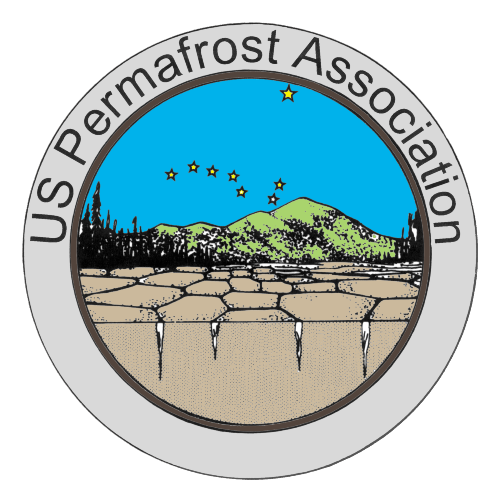
 The USPA is pleased to announce the availability of an updated searchable database on permafrost-related publications. The American Geosciences Institute (AGI), with support from the National Science Foundation (NSF), has migrated the previous Cold Regions Bibliography to a new platform. Included are the USPA supported PMAs dating back to 2011. The Bibliography is searchable at
The USPA is pleased to announce the availability of an updated searchable database on permafrost-related publications. The American Geosciences Institute (AGI), with support from the National Science Foundation (NSF), has migrated the previous Cold Regions Bibliography to a new platform. Included are the USPA supported PMAs dating back to 2011. The Bibliography is searchable at 





